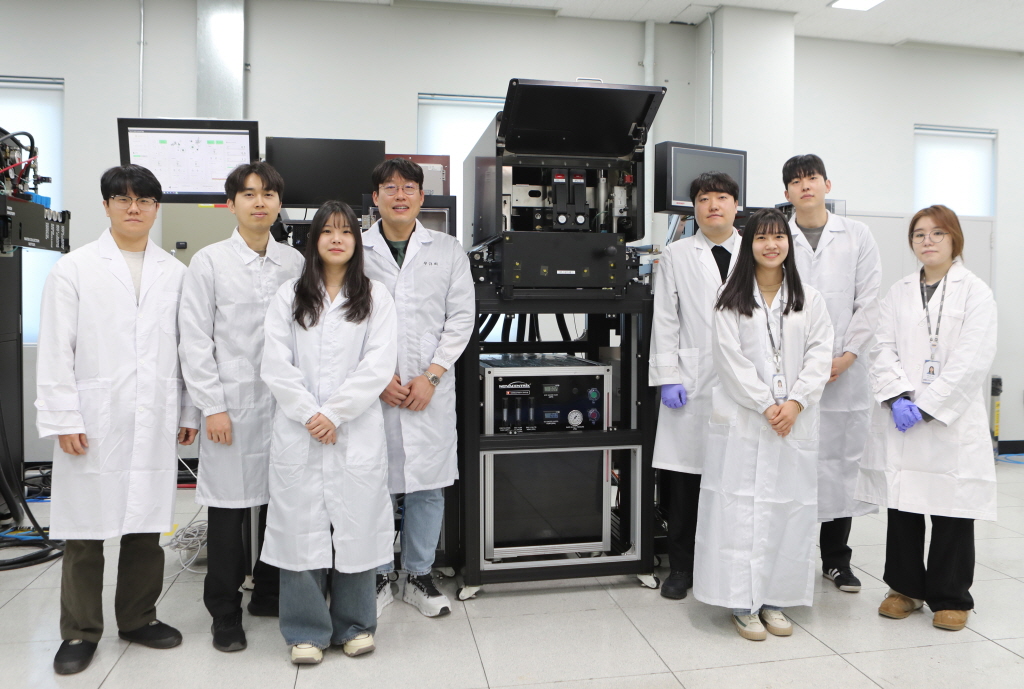과학기술정보통신부 산하 한국기계연구원(원장 류석현) 이차전지장비연구실 우규희, 권신 책임연구원 연구팀은 초고속, 대면적 플래시 공정을 활용하여 후막 전극의 열화를 억제하는 전극 활성화 기술을 개발했다.
기계연구원, 초고속·대면적 플래시 공정 활용 후막 전극 열화 억제
세계 최초로 이차전지 전극 제조에 롤투롤 호환 플래시 공정을 도입하여 후막 전극의 성능 열화를 획기적으로 억제하는 기술이 개발됐다. 이 기술은 배터리의 가격을 낮추고 에너지 밀도와 용량을 높이면서도 크기와 무게를 줄일 수 있는 새로운 가능성을 제시했다.
과학기술정보통신부 산하 한국기계연구원(원장 류석현) 이차전지장비연구실 우규희, 권신 책임연구원 연구팀은 초고속, 대면적 플래시 공정을 활용하여 후막 전극의 열화를 억제하는 전극 활성화 기술을 개발했다.
연구팀은 파일럿 스케일의 롤투롤 테스트 베드를 통해 롤투롤 공정과의 호환성도 성공적으로 입증했다.
후막 전극은 고에너지 밀도를 구현하며 배터리 팩의 층수를 줄여 구조를 단순화하고, 제조 공정을 효율화함으로써 원가를 획기적으로 절감시킬 수 있다.
반면에 두꺼운 전극 두께로 인해 리튬 이온과 전자의 이동 저항이 증가하고 전해질 침투가 어려워져 율속특성과 수명과 같은 전기화학적 성능이 저하되는 문제가 있었다.
이 문제를 해결하기 위해 연구팀은 후막 전극에 1밀리초 이내의 순간적인 플래시를 조사했다.
이 과정에서 발생하는 광열 반응은 재료의 탄화, 활물질의 층간 간격 확장, 기공률 증대, 전해질과의 계면적 확대와 같은 반응을 즉각적으로 일으켜 리튬 이온과 전자의 이동성을 향상시키고 전해질 침투성을 개선했다.
결과적으로 후막 전극의 성능 열화를 억제할 수 있었다.
광열 반응을 이용하기 때문에 전극 전체가 고온에 노출되는 것을 방지하여 전극 내부의 바인더 분해를 최소화하고, 집전체의 산화와 같은 열적 손상도 막을 수 있다.
이 기술은 이차전지 제조 산업의 표준인 롤투롤 공정과의 호환성이 높으며, 니켈-코발트-망간 양극 등을 비롯한 여러 전극에 확대 적용이 가능할 것으로 예상된다.
연구팀은 플래시 공정을 전극 건조 공정에 적용하여 응용성 평가를 수행하고 있다.
전극 건조에 소모되는 에너지와 공정 시간을 크게 감소시키면서도 전극 활성화 효과까지 유도할 수 있음을 확인했다.
최근에는 이차전지 장비 기업과 협력하여 양산 수준의 설비를 개발하고 공정 평가를 진행 중이다.
기계연 우규희 책임연구원은 “플래시를 이용한 전극 활성화 기술은 롤투롤 공정과 호환이 가능한 후처리 기술이기 때문에 기존의 공정과 제조 설비에 접목이 상대적으로 용이하다”며 “국내 이차전지 제조사 진입을 목표로 기술 완성도를 높이고 시험 평가와 검증을 지속적으로 진행해 나갈 예정”이라고 밝혔다.
본 연구는 과학기술정보통신부 글로벌탑전략연구단과 산업통상자원부 탄소저감형 중대형 이차전지 혁신 제조 기술 개발 사업의 지원을 받아 수행됐다.
우수성을 인정받아 재료·화학 분야 국제학술지인 Small Methods(IF: 10.7)의 2025년 2월호 표지논문으로 선정됐다.
